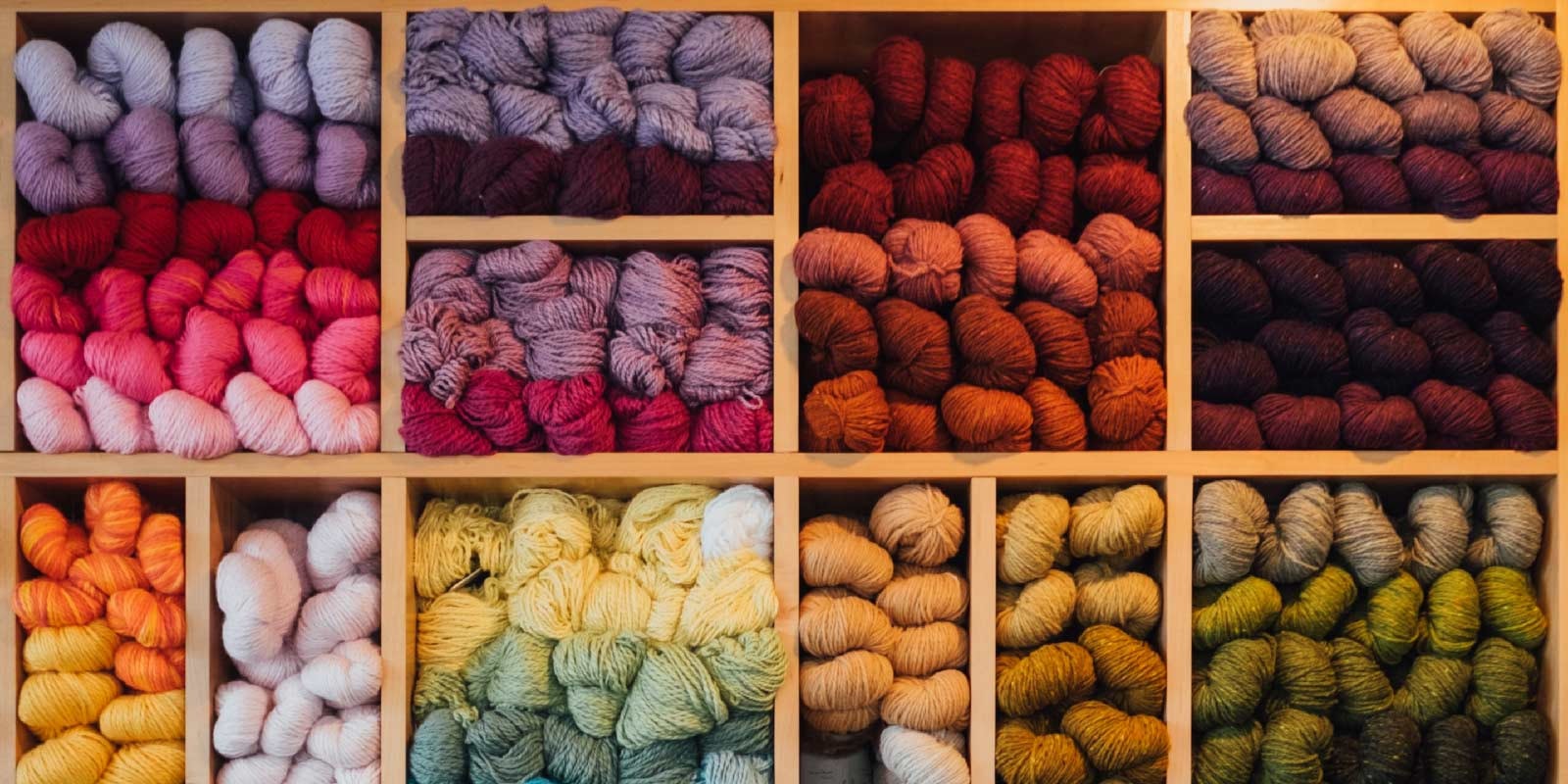 | |
| Christina's scarf, designed in a fit of inspiration while warping. |
Yarn is both the weaver's best friend and our sometimes enemy. When we use it correctly and play nice, together we can create amazing scarves, shawls, napkins, runners, and just about anything our hearts desire. When we use the wrong yarn or when we mistreat our yarns, bad things can happen.
When I started weaving, it was obvious that certain yarns were suited or not suited for different projects. Cotton and linen (and cottolin) made for wonderful napkins and towels, whereas wool or silk probably wouldn’t be great choices. Silk and wool do, however, make wonderful scarves and shawls.
It all seemed so easy at first. Then I started to accumulate yarn from other weavers cleaning out their stashes. I was given thick cotton flake and slubby silk. I also have some beautiful variegated rayon, in both slubby and non-slubby varieties. Then, of course, there are the colorful variegated and hand-painted "knitting" yarns I’m drawn to like a moth to a flame. I know they’d make great knitted pieces, but I don’t knit.
For a long time, I had no idea what to do with any of these yarns. They were beautiful, and oftentimes soft to the touch, so they lived happily in the back of my shelves. Then, one day, I became inspired. While warping my loom for some dish towels (of course), I began to think about some variegated superwash merino/silk I had in my stash. While pulling out cones of cotton, I happened across both it and a ball of black alpaca leftover from a past scarf project.
As I warped the cotton, my mind was on wool. What if I used the black yarn in the warp and the variegated in the weft? What if I found an undulating twill that had long weft floats so you could really see the color changes? What would happen when I wet-finished the pieces, would the alpaca full too much, or would it full enough to really set off colorful superwash?
I don’t think I’ve ever woven a set of towels so fast in my life. As soon as the towels were off the loom, I found a good twill draft, wound the alpaca, and warped my loom. I carefully wound my bobbins and then re-wound each one so the variegated bits would line up correctly when I moved to each new bobbin. Then I began weaving.
It worked! My idea actually worked! The black set off the colorful yarn, and the undulating twill let it come to the fore while keeping the scarf stable. When I wet-finished it, the black fulled just a bit, which further stabilized the scarf and made the oranges and pinks and yellows pop even more. Aside from warping a repeat of the twill undulations a bit too long, it looked perfect.
Choosing yarns for projects and projects for yarns shouldn’t be scary. I was lucky that in this case I had a fit of inspiration that worked out perfectly. For the rest of my uncommon cones, I’m going to watch Tom Knisely’s new workshop The Weaver’s Yarn Companion for ideas. In his new video, Tom explains how to choose the right yarns for what you want to weave—and vice versa. He also gives you information on how to plan projects around your yarns, from choosing the right setts to which yarns are best for warp or weft. (Plus, I just really love to listen to Tom talk about yarn and weaving.)
In the meantime, if you have any ideas for my cotton flake or slubby silk, feel free to let me know! I can’t wait to see what they become.
Happy Weaving!


